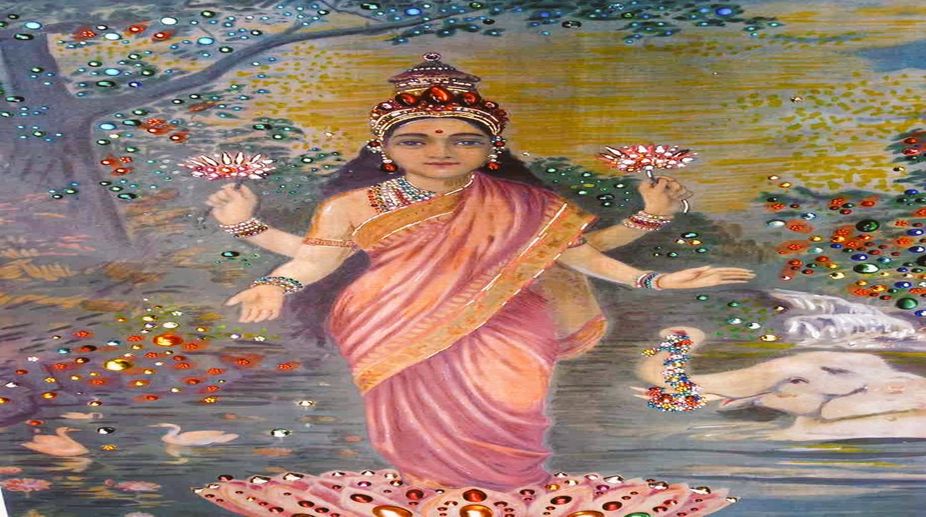Nepal Policy
India’s relationship with Nepal has always been complex, shaped by historical, cultural, and geographical factors.

Olaf Van Cleef's Painting (PHOTO: TWITTER)
‘When I work, I am in the painting’, Olaf Van Cleef says in his French-accented English, sitting comfortably in the plush chair of his Taj Bengal hotel room and enjoying a light lunch with fellow journalists. The view from the window is sumptuous, verdant and serene – a long line of trees fading into the horizon of the cityscape-a definite rarity in this urban metropolis; and perhaps at the back of his magnificently creative mind there’s an idea of a painting brewing inspired by this view. Although born in Belgium and living and working in France, India has always been a recurring influence in his exquisite artwork and a second home, ever since he first visited the country at the age of 15, enamoured with the tales of adventure he’d read in Kipling’s Jungle Book . The world of wild nature-with elephants, exquisite butterflies, and tropical flowers- appealed to his imagination and never left him. His exhibitions here are immensely successful, as evident from the fact that in one of them, all the paintings were sold out in the first fifteen minutes of being unveiled. A dedicated majority of his clientele regularly buy his paintings of gods and goddesses for their ‘puja rooms’, with a noticeable rise in sales during the time of Diwali.
Coming from the illustrious Van Cleef family who were jewellers to the Czars and with his years of experience and expertise at working as a counsellor on high range jewellery at Cartier, it seems natural that he would channelize his creativity into a medium like painting that allows him to explore his love for Indian mythology, his talent at handling minute Swarovski crystals and semi-precious stones, and experiment with antique paper, fine-tipped pens, water colours to create highly-detailed works of art, so detailed in fact that you’d need a magnifying glass to observe the seven glimmering shades of gold he used to colour the many coins lying at the feet of Lakshmi, the goddess of wealth.
Advertisement
His attention to detail is something that indeed sets him apart. Each of his paintings is a labour of love. ‘Some require 150, 250 hours of work’, he says, preferring to work at mainly night, as daylight tends to interfere with the way he perceives the light and shine of the different stones. While showing us his most recent works, one notices that even in the most simplistic of his pictures, there are several other paintings hidden within it, so that every time you view it, you’ll notice something new, something different, whether it is the glimmer of light falling on the intricate wings of a butterfly done with chocolate paper or the first dewdrop clinging to the veins of a leaf. When asked about his creative process, he brings his ipad where he has taken pictures of the different stages of making art- right from the very beginning where he lets the paper soak in the colours to the slow and painstaking effort of adding tiny crystals one by one. This strenuous dedication and precision sums up the reason he says ‘I always work on one painting at a time’.
Advertisement
In fact in his approach to both work and life, he is very orderly, preferring to do one thing after the other. While unveiling his latest paintings, he shares interesting anecdotes, but it is only after the customary photo shoot is complete, that he sits down for lunch and an interview.
He is a fan of Raja Ravi Verma and Jamini Roy. When initially starting out, he preferred to work with abstract pointillism but that did not resonate with the audience. ‘No one wanted to buy my work’, he laments. So he switched to painting figures from Hindu myth, yet his skilful use of bright colours was vaguely Impressionistic and there is still pointillism in the rich detail. When he went to Bhutan, he was struck by the simplicity and ease of life there, and did a series of paintings of Buddhist and Tibetan deities and local folklore complete with delicate labyrinthine dragons as well.
Now, there is also a subtle movement in the subjects he chooses to paint. The larger canvasses feature the usual deities from the Hindu pantheon, often imagined with French undertones and innovative symbolism, but the smaller ones show us that Olaf is slowly preferring to return to his childhood dreams and fancies- painting lush peacocks, cockatiels, frogs, lotuses- and even three-headed elephants. When I ask him about his favourite Indian god, his answer is a quick and confident ‘Ganesha’, not only because it is one of the most easily recognizable and iconic gods worldwide (‘there are families in Brazil who worship him as well, he informs us) but it also connects him with his childhood fascination with elephants.
Olaf has certainly come a long way, but his enthusiasm makes it clear that he has no intention of stopping. He has exhibitions coming up and he’s involved with a bit of designing the Jagaddhatri Puja at the once-French colony of Chananagar. And it seems he has found his purpose in life: each of his paintings is its own reward.
Advertisement